Pine Needle Basketry and Habitat Restoration: AWCP Week 22 - 2014
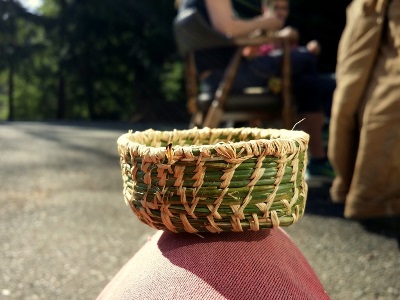
Alderleaf Wilderness Certification Program (AWCP) students learned pine needle basketry and habitat restoration skills during week 22 of the 2013-2014 program. The use of natural materials to make baskets is one of the oldest
crafts known to man. It dates back more than 9,000 years!
There are many benefits a person gains from learning primitive skills and crafts. The students start at the very beginning and gather the materials that will be needed. As they are gathering the materials, they learn where they grow, how to identify it, what some of the uses are, and how it benefits the earth.
Once that
is finished, the next step is to process the plant and get it ready for
use. Once the processing is done then
you can begin using the material, however each plant may require different
handling. For example: you only need to soak pine needles for half an hour,
whereas willow branches need to be soaked a day or two before they are flexible enough to be worked without breaking.
Today many people have been raised with the idea that everything is so easily replaced, and the ability to value things is quickly dropping. After all we can just run to the store and get another one! As we begin to work with these plants, learning how they benefit the earth and how we can make useful items from them, we begin to see each plant more as an individual, and we can begin to value their presence and purpose in this world a little more.
When we learn to value the materials that get used to make something we are less likely to treat it as a disposable item -which is a step in the right direction to being good stewards of this land that provides so much for us. So as you can see there are many levels to the benefits we gain as we work closer to the earth.
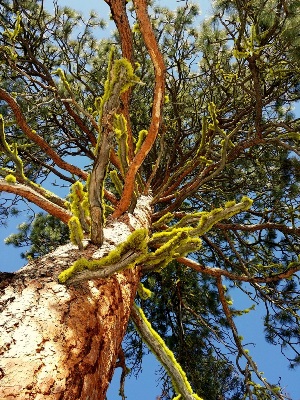
Ponderosa Pine -Pinus ponderosa
- Pine needles grow in clusters of 3 and the length of each needle is 4 – 9” long.
- The ponderosa pine is a food source and creates habitat for many kinds of animals, from squirrels and birds, to porcupines.
- It has been used for food and medicine by Native Americans for many years as well as for other practical things like the pine needle basket.
- It is a nitrogen fixer to the soils.
- You can tell the difference between the male and female trees by looking at the strobili, this is the part that will turn into a cone. The females strobili are yellow and the male strobili are red.
During our winter trip the students gathered the needles of the ponderosa pine to use in our basket making class.
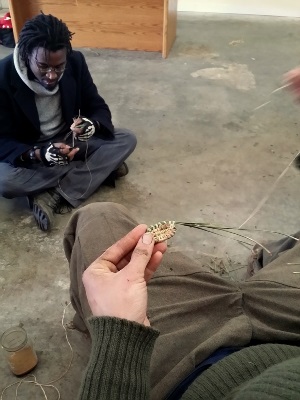
Here students Patrick and Sam are working on the base of their basket. The beginning part is usually the hardest part, but once you get it started you will be surprised at how much can get done in a day.
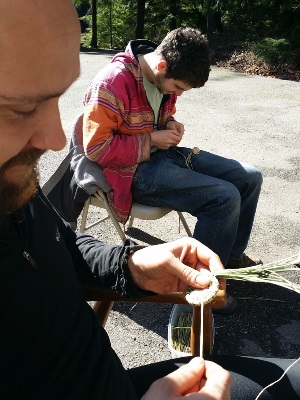
Here's two of our students enjoying the sun while working on the bases of their baskets.
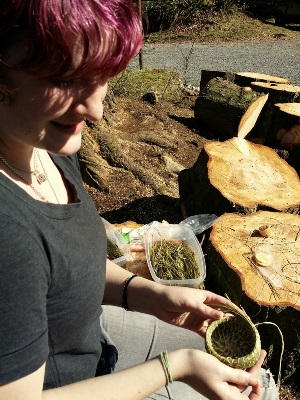
Student, Ali, discovered how much she enjoys working with pine needles. Here she shows off how her basket is coming along.
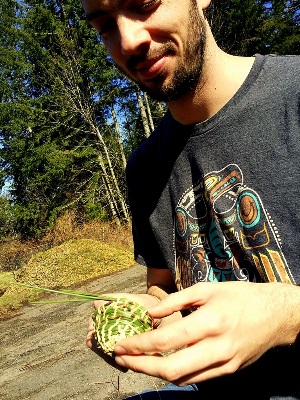
Student, Jim, is making good progress on his basket.
To end our day we took time to reflect on the lessons learned about the ponderosa pine and working with needles.
Habitat Restoration Skills
The other part of the week was spent learning about the principles of habitat restoration and forest stewardship. Each day included hands-on projects where areas of wildlife habitat on the school campus were improved by removing non-native invasive plants, re-planting with key native plants, and caring for the native sapling trees planted in previous years.
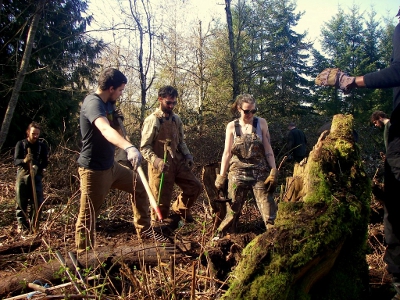
Here students work at removing the invasive Himalayan blackberry bushes. As they begin cutting back the bramble they discover some native plants like willow, snowberry, and nettles. They tagged them so that no one will accidentally dig them up.
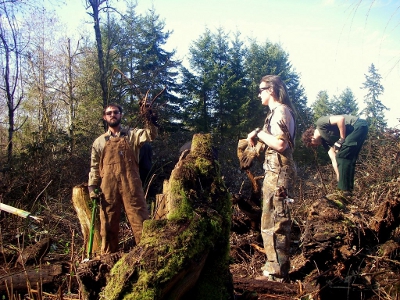
Here student Seth holds up his prize root ball. It takes a lot of work to finally get one of these out of the ground!
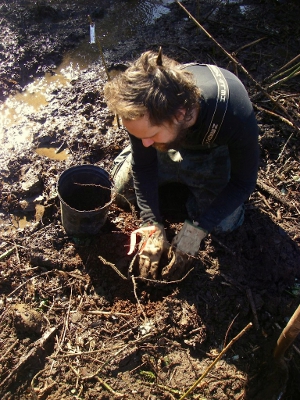
Student Darrell replanting the area with one of our native plants, a nootka rose.
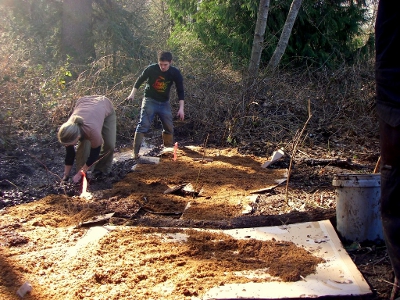
Here instructor, Heather, shows students how to sheet mulch as they replant the area with more native plants. Willow, nootka rose, Oregon grape and ocean spray were some of the natives that were planted.
I have to say
that we couldn’t have asked for a better week as far as the weather goes - not
too hot and not too cold,
just right for having fun with hands-on projects outdoors!
Next: Week 23: Olympic Peninsula Field Trip
Learn about the Alderleaf Wilderness Certification Program,
our in-depth, nine-month course that trains students in
wilderness survival, permaculture, wild edible & medicinal plants, wildlife tracking, naturalist, and
outdoor leadership skills.
Return back to AWCP Highlights
Is The Essential Wilderness Survival Skills Course Right for You? Take the "Online Survival Training Readiness" Quiz
See for yourself if this eye-opening course is a good fit for you. It takes just a few minutes! Get your Survival Training Readiness Score Now!

Grow Your Outdoor Skills! Get monthly updates on new wilderness skills, upcoming courses, and special opportunities. Join the free Alderleaf eNews and as a welcome gift you'll get a copy of our Mini Survival Guide.

 The Six Keys to Survival: Get a free copy of our survival mini-guide and monthly tips!
The Six Keys to Survival: Get a free copy of our survival mini-guide and monthly tips!
Learn more